Lifting Equipment: Enhancing Safety and Efficiency
Date Posted:25 September 2024
By understanding the different types of lifting equipment and selecting the right tools for your needs, you can enhance productivity, reduce manual handling risks, and maintain a safer workplace.
Lifting equipment is crucial in many industries, from construction sites to warehouses. These tools are designed to assist in moving heavy loads safely and efficiently, reducing manual effort and minimising the risk of injury. Understanding the different types of lifting equipment and their applications can help businesses optimise their operations and maintain a safe working environment.
The Importance of Lifting Equipment
In workplaces where heavy lifting is a routine task, using the right lifting equipment is essential for several reasons:
- Reducing Manual Handling Risks: Lifting heavy items manually can lead to musculoskeletal injuries, such as back strain or repetitive strain injuries. Lifting equipment helps mitigate these risks by taking over the physical effort required to move heavy loads.
- Improving Efficiency: Lifting equipment can significantly speed up the process of moving goods, enabling workers to handle more tasks in less time. This efficiency can boost overall productivity and streamline operations.
- Ensuring Safety: Proper lifting equipment enhances safety by providing a controlled and secure method for moving heavy items. This reduces the likelihood of accidents and injuries caused by improper lifting techniques or equipment failure.
Types of Lifting Equipment
There are various types of lifting equipment, each designed for specific tasks and applications. Here’s an overview of some common types:
- Cranes: Cranes are versatile lifting machines used for moving heavy loads vertically and horizontally. They come in various forms, including tower cranes, gantry cranes, and overhead cranes, each suited for different lifting tasks. Cranes are commonly used in construction sites, manufacturing facilities, and shipping yards.
- Forklifts: Forklifts are widely used in warehouses and distribution centres for lifting and transporting pallets and other heavy items. They come in different types, including electric and diesel-powered models, and can be fitted with various attachments to handle different loads.
- Hoists: Hoists are devices used for lifting and lowering loads vertically. They can be manual, electric, or pneumatic, and are often used in situations where precise control is required, such as in maintenance or repair tasks.
- Jacks: Jacks are used for lifting heavy items short distances. Common types include hydraulic jacks, bottle jacks, and scissor jacks. They are often used in automotive repair and maintenance to lift vehicles for servicing.
- Lift Tables: Lift tables provide a stable platform that can be raised or lowered to various heights. They are ideal for ergonomic lifting, allowing workers to position loads at a comfortable working height and reduce the risk of strain.
Choosing the right Lifting Equipment
Selecting the appropriate lifting equipment depends on several factors, including the type of load, the lifting height, and the operating environment. Here are some considerations to keep in mind:
- Load Capacity: Ensure that the lifting equipment has a sufficient load capacity for the items you need to move. Overloading equipment can lead to mechanical failure and increase the risk of accidents.
- Lifting Height: Consider the maximum lifting height required for your tasks. Different types of lifting equipment offer various lifting heights, so choose equipment that meets your specific needs.
- Environment: Evaluate the working environment where the equipment will be used. Factors such as space constraints, floor conditions, and exposure to harsh weather or chemicals can influence the type of equipment needed.
- Frequency of Use: For tasks that require frequent lifting, invest in equipment designed for durability and high performance. Regular maintenance and inspection are also essential to ensure the equipment remains in good working condition.
Best Practices for using Lifting Equipment
To maximise the safety and efficiency of lifting equipment, follow these best practices:
- Training: Provide comprehensive training for employees who operate lifting equipment. Training should cover safe operating procedures, maintenance, and emergency response.
- Regular Maintenance: Perform routine maintenance and inspections to ensure that lifting equipment remains in safe working condition. Address any issues promptly to prevent equipment failure and accidents.
- Load Securing: Ensure that loads are properly secured before lifting. This includes checking that items are evenly distributed and securely fastened to prevent shifting or falling during movement.
- Safety Gear: Encourage the use of appropriate personal protective equipment (PPE) when operating lifting equipment. This may include helmets, gloves, and safety glasses to protect against potential hazards.


































































































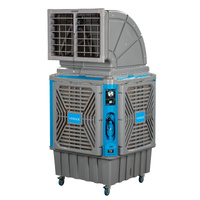






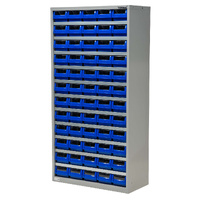
















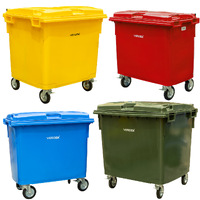





 Trolleys & Hand Trucks
Trolleys & Hand Trucks Cage Trolleys
Cage Trolleys Cleaning Carts & Trolleys
Cleaning Carts & Trolleys Construction Trolleys
Construction Trolleys Custom Trolleys
Custom Trolleys Hand Trucks & Dollies
Hand Trucks & Dollies Laundry/Linen Trolleys
Laundry/Linen Trolleys Lifting Trolleys
Lifting Trolleys Order Picking Trolleys
Order Picking Trolleys Panel Cart Trolleys
Panel Cart Trolleys Platform Trolleys
Platform Trolleys Powered Trolleys
Powered Trolleys Shelf & Tiered Trolleys
Shelf & Tiered Trolleys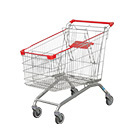 Shopping Trolleys
Shopping Trolleys Stainless Steel Trolleys
Stainless Steel Trolleys Tool Trolleys
Tool Trolleys Utility & Service Carts
Utility & Service Carts Lifting & Handling Equipment
Lifting & Handling Equipment Forklift Attachments
Forklift Attachments Jib Attachments
Jib Attachments Lifting Hoists & Pallet Hooks
Lifting Hoists & Pallet Hooks Load Skates & Tow Tugs
Load Skates & Tow Tugs Manual Stackers & Lifters
Manual Stackers & Lifters Pallet Jacks
Pallet Jacks Pallet Lifters
Pallet Lifters Pallet Rotators & Dispenser
Pallet Rotators & Dispenser Powered Pallet Trucks & Electric Lifters
Powered Pallet Trucks & Electric Lifters Scissor Lift Trolleys and Tables
Scissor Lift Trolleys and Tables Conveyor Equipment
Conveyor Equipment Conveyor Frames & Stands
Conveyor Frames & Stands Roller & Skate Conveyors
Roller & Skate Conveyors Ladders & Access Equipment
Ladders & Access Equipment Container & Yard Ramps
Container & Yard Ramps Ladders & Step Stools
Ladders & Step Stools Work Platforms & Crane Cages
Work Platforms & Crane Cages Drum Handling Equipment
Drum Handling Equipment Drum Storage & Bunding
Drum Storage & Bunding Drum Trolleys & Lifters
Drum Trolleys & Lifters Forklift Drum Handling
Forklift Drum Handling Waste Handling & Bins
Waste Handling & Bins Bin Lifters & Tippers
Bin Lifters & Tippers Plastic Waste & Wheelie Bins
Plastic Waste & Wheelie Bins Steel Waste & Tipping Bins
Steel Waste & Tipping Bins Waste Carts
Waste Carts Dangerous Goods Storage & Spillage
Dangerous Goods Storage & Spillage Aerosol Cans Storage Cages
Aerosol Cans Storage Cages Bunded Pallets & Storage
Bunded Pallets & Storage Corrosive Goods Storage Cabinets
Corrosive Goods Storage Cabinets DG Storage & Trolleys
DG Storage & Trolleys Flammable Liquid Cabinets
Flammable Liquid Cabinets Forklift Gas Storage Cages
Forklift Gas Storage Cages Site Storage
Site Storage Spill Kits
Spill Kits Shelving & Storage Equipment
Shelving & Storage Equipment Stillage & Transport Cages
Stillage & Transport Cages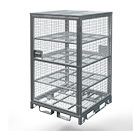 750 Series Cage Configurations
750 Series Cage Configurations Heavy Duty Cabinets
Heavy Duty Cabinets Heavy Duty Shelving
Heavy Duty Shelving Mega Bins & Pallets
Mega Bins & Pallets Packing & Workbenches
Packing & Workbenches Parts Trays & Stor-Pak Bins
Parts Trays & Stor-Pak Bins Pegboard & Louvre Panels
Pegboard & Louvre Panels Plastic Bins & Crates
Plastic Bins & Crates Plastic Handling Solutions Bins
Plastic Handling Solutions Bins Plastic Pallets
Plastic Pallets Stack & Nest Bins
Stack & Nest Bins Pallet Racking Accessories
Pallet Racking Accessories Workplace Equipment
Workplace Equipment Modular Workbenches
Modular Workbenches Electric Height-Adjustable Workbenches
Electric Height-Adjustable Workbenches Floor Matting
Floor Matting General Workplace Equipment
General Workplace Equipment Industrial Weighing Scales
Industrial Weighing Scales Packaging Machinery
Packaging Machinery Stationery Cupboards
Stationery Cupboards Storage and Stillage Cages
Storage and Stillage Cages Tool Trolleys
Tool Trolleys Tooling Cabinets
Tooling Cabinets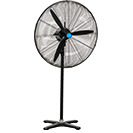 Workshop Fans and Coolers
Workshop Fans and Coolers Safety Barriers, PPE & Signage
Safety Barriers, PPE & Signage Barriers & Bollards
Barriers & Bollards First Aid Equipment
First Aid Equipment Gloves, Knives and PPE
Gloves, Knives and PPE Signage
Signage Cleaning & Site Supplies
Cleaning & Site Supplies Cleaning Equipment
Cleaning Equipment Cleaning Trolleys
Cleaning Trolleys Rubbish Bins
Rubbish Bins Signs & Traffic Supplies
Signs & Traffic Supplies Construction Equipment
Construction Equipment Construction Trolleys
Construction Trolleys Waste Handling
Waste Handling General Site Equipment
General Site Equipment Concrete Equipment
Concrete Equipment Site Storage
Site Storage Lifting Equipment
Lifting Equipment Verdex Specials
Verdex Specials









